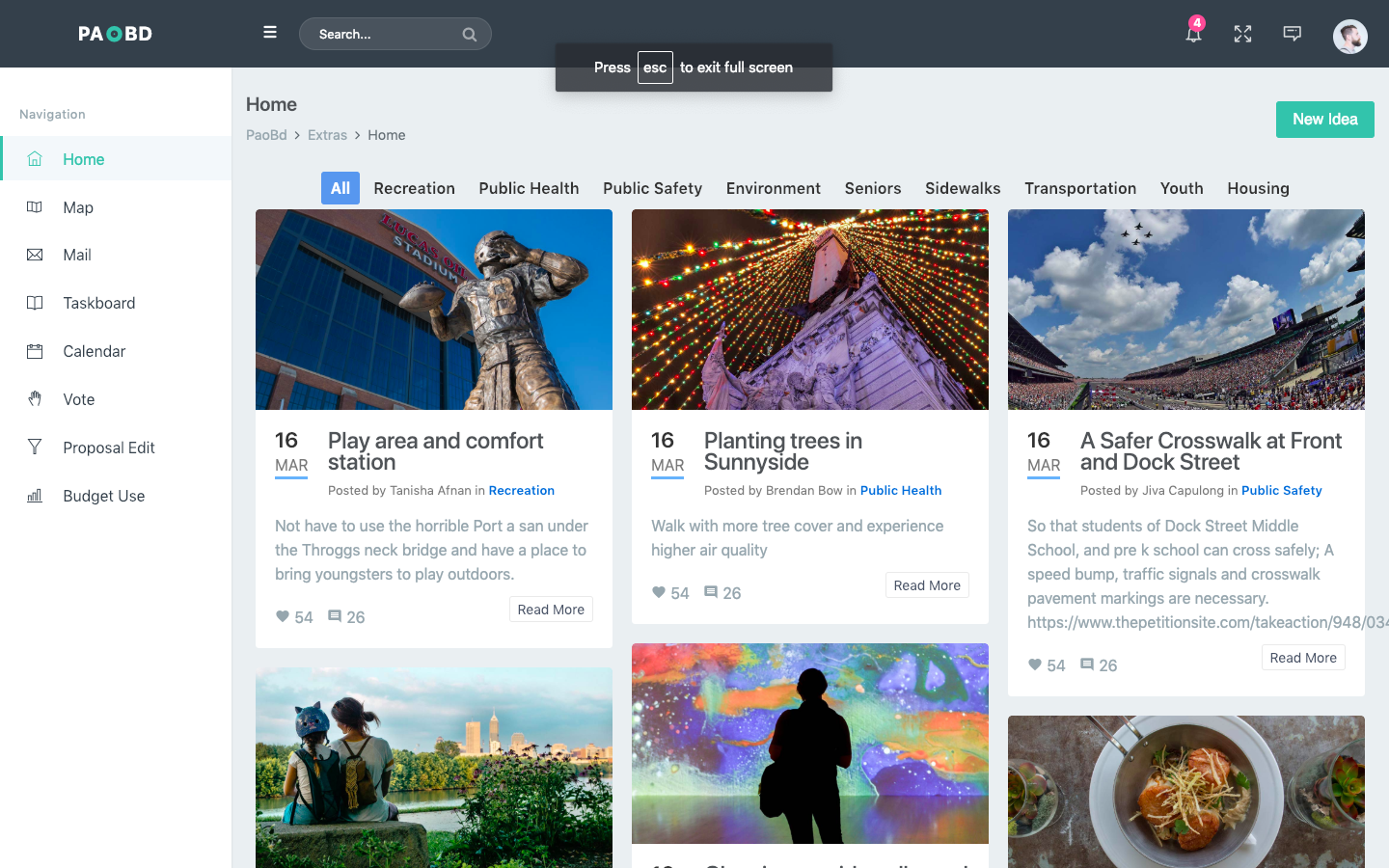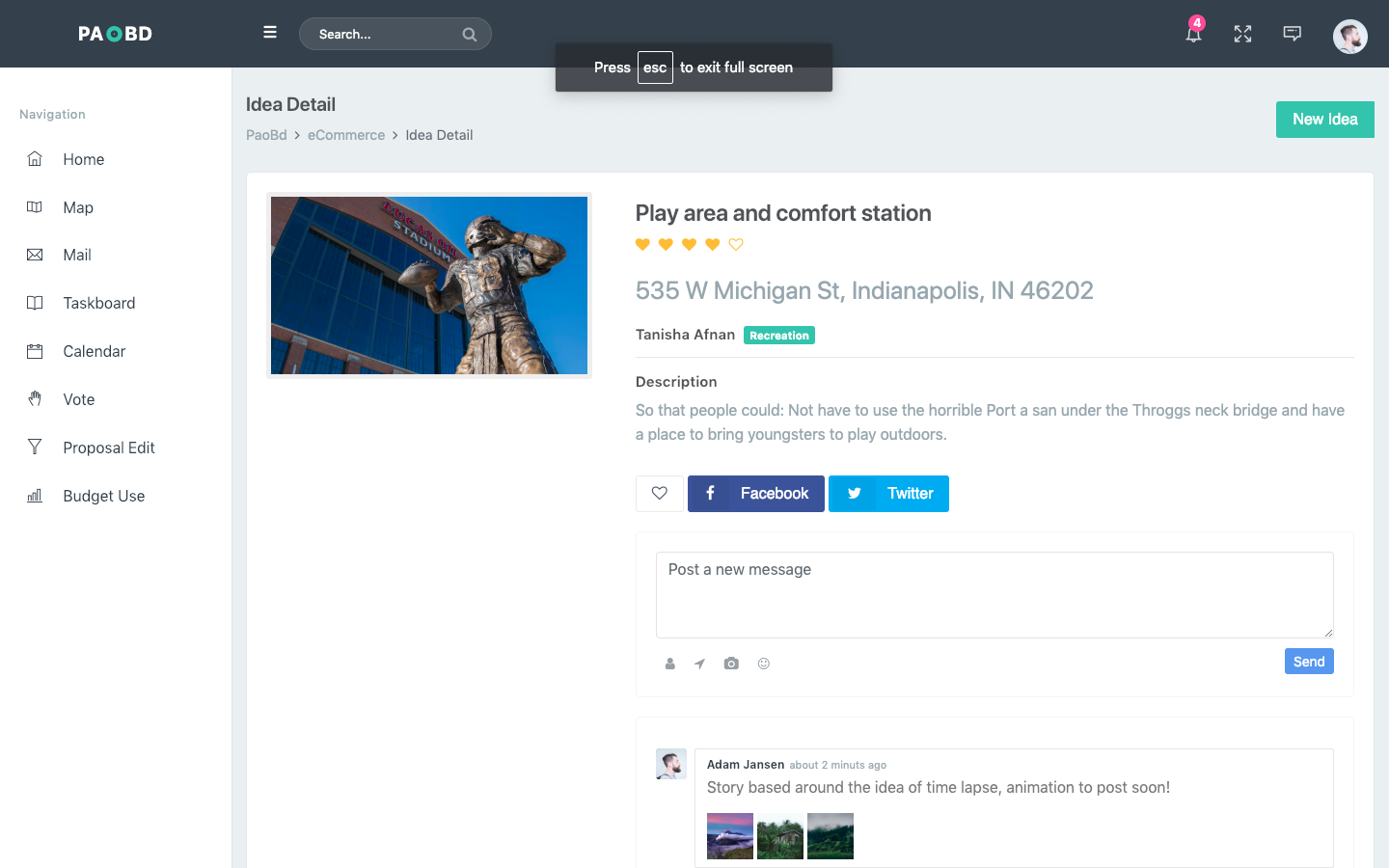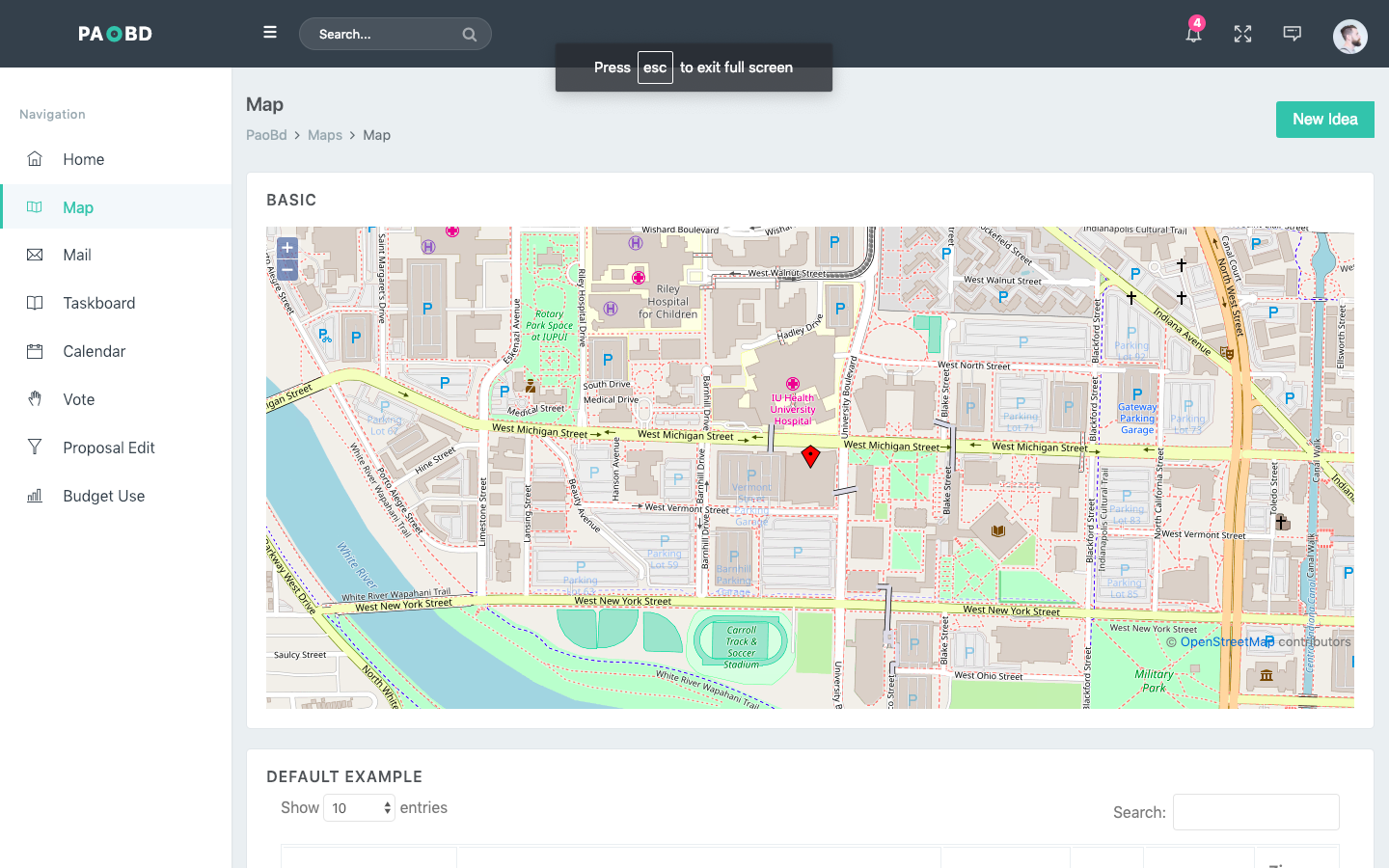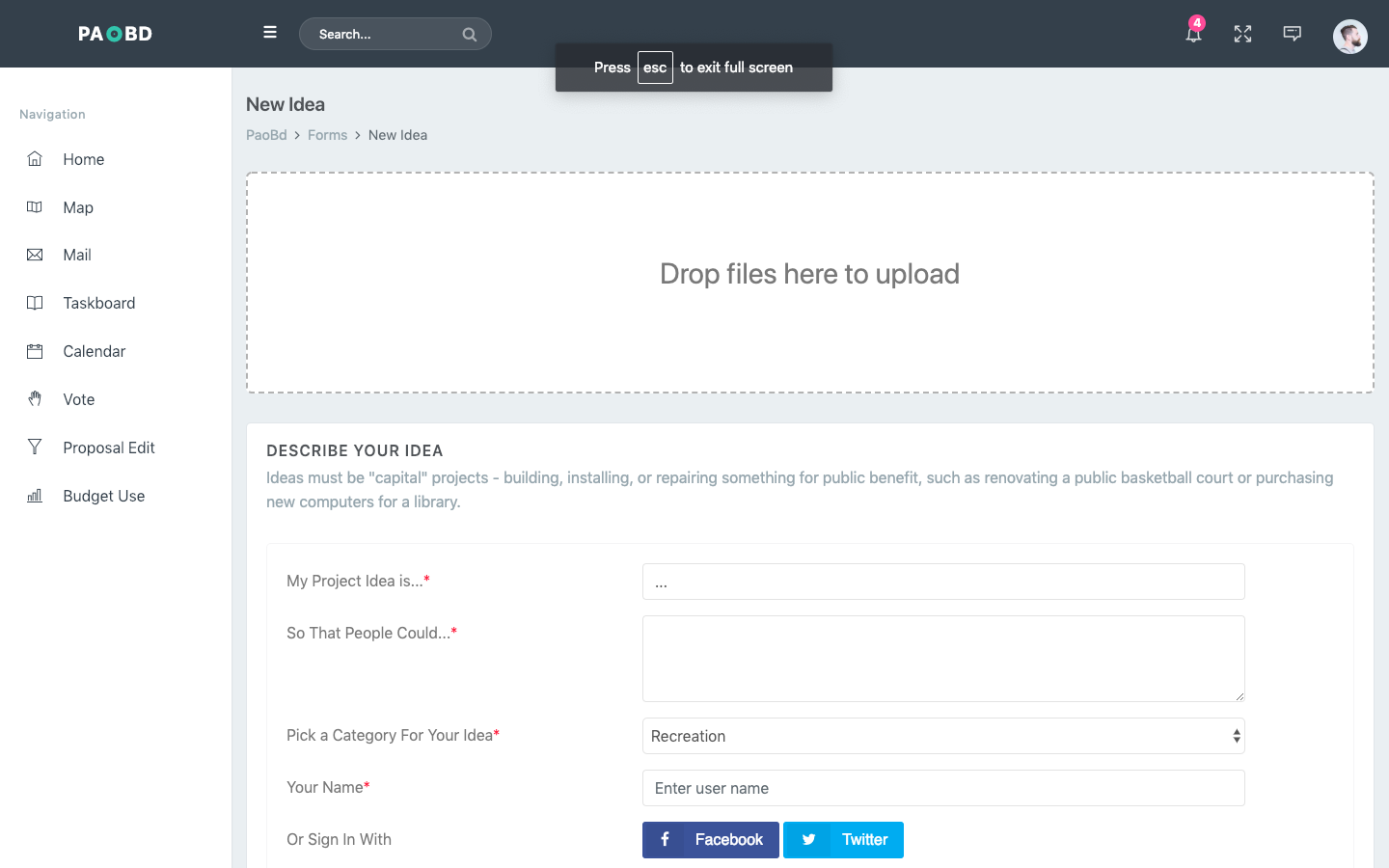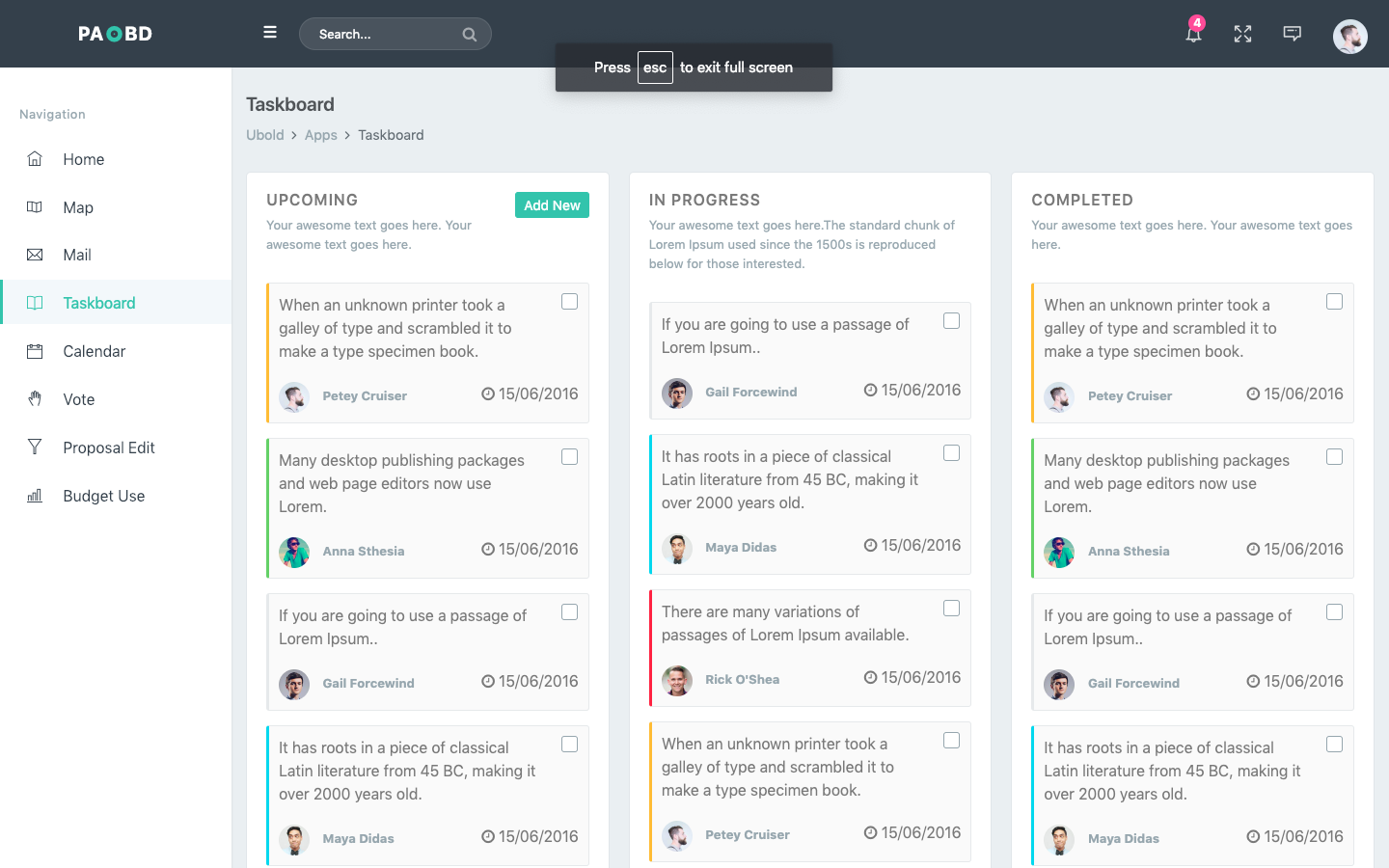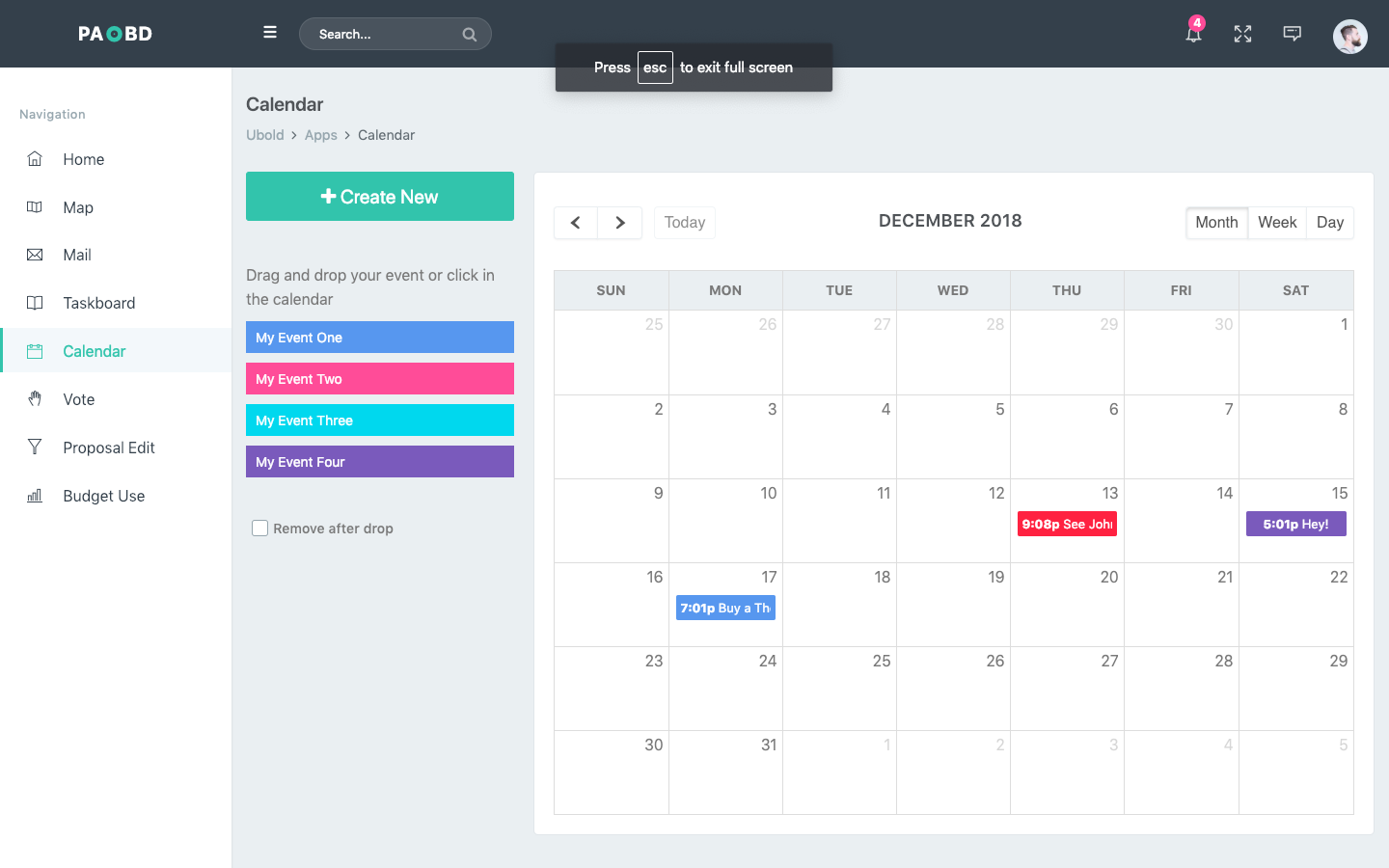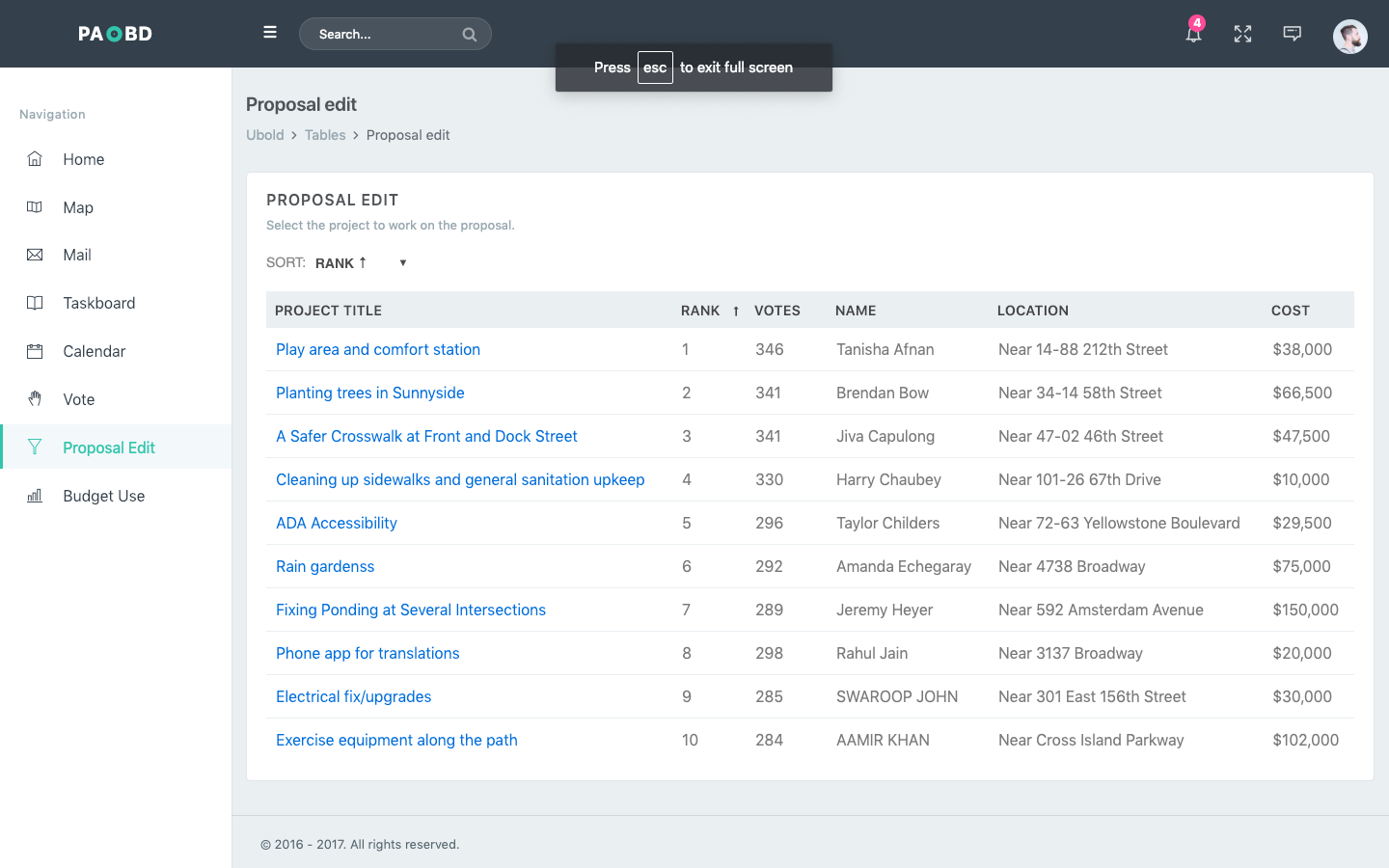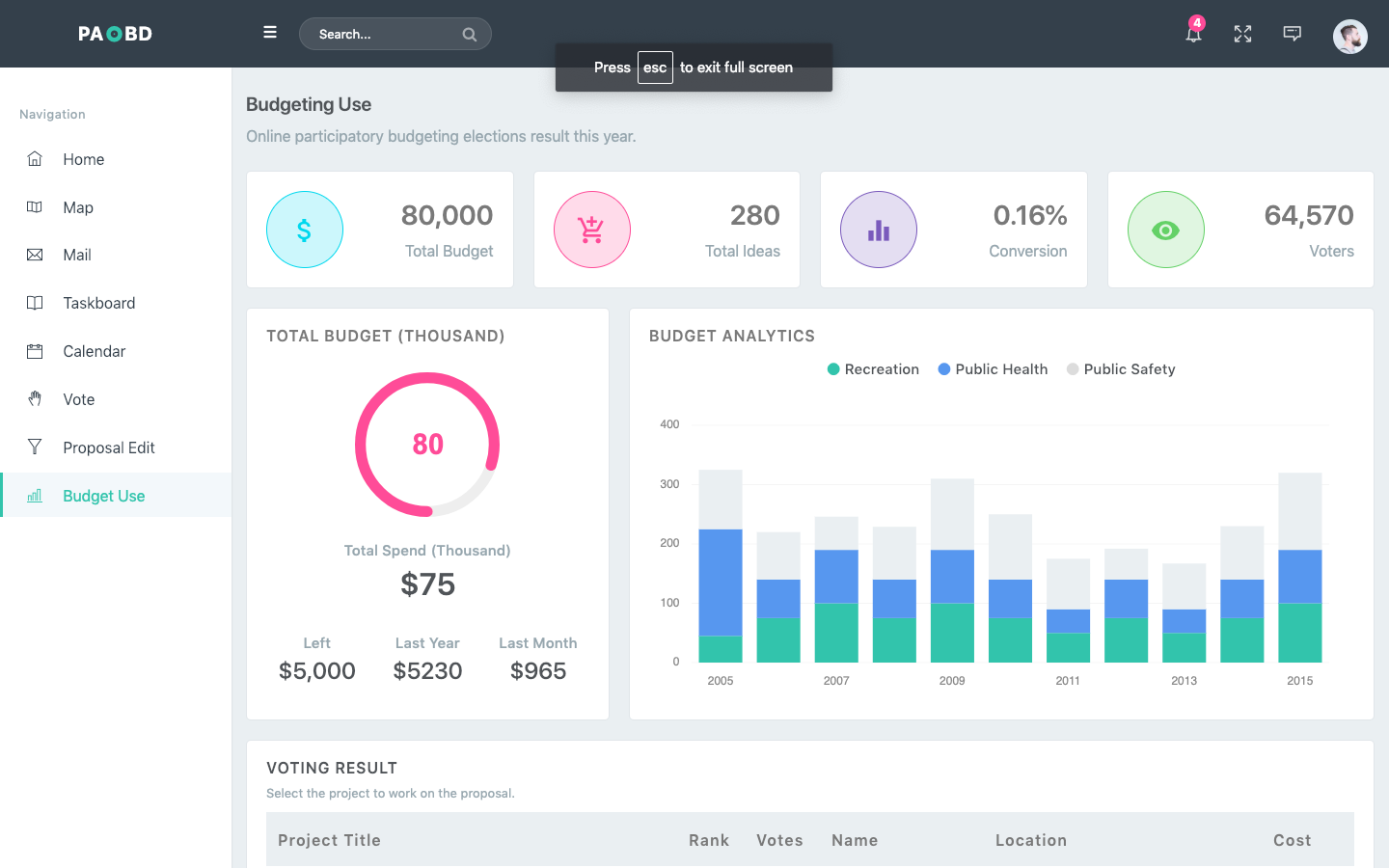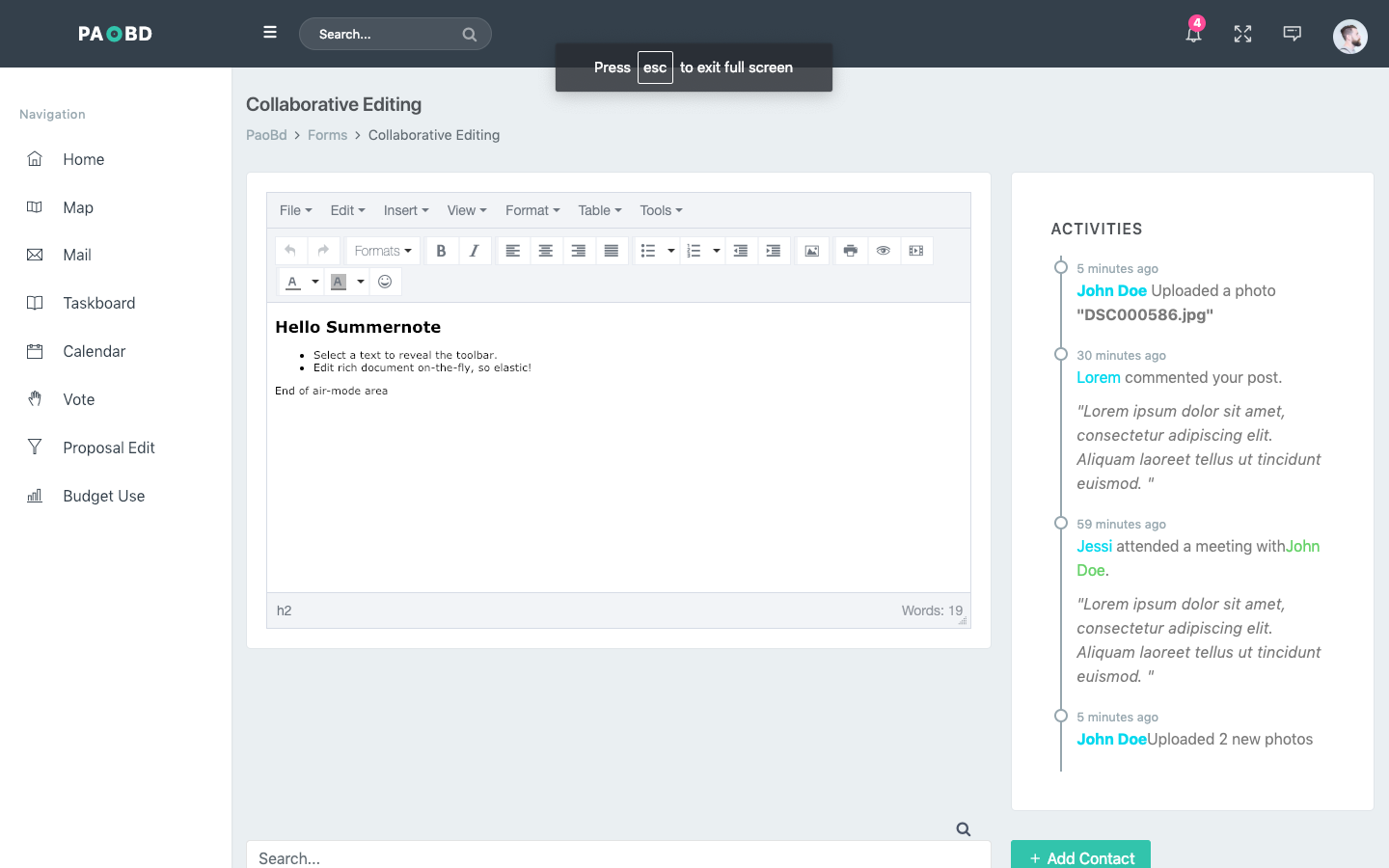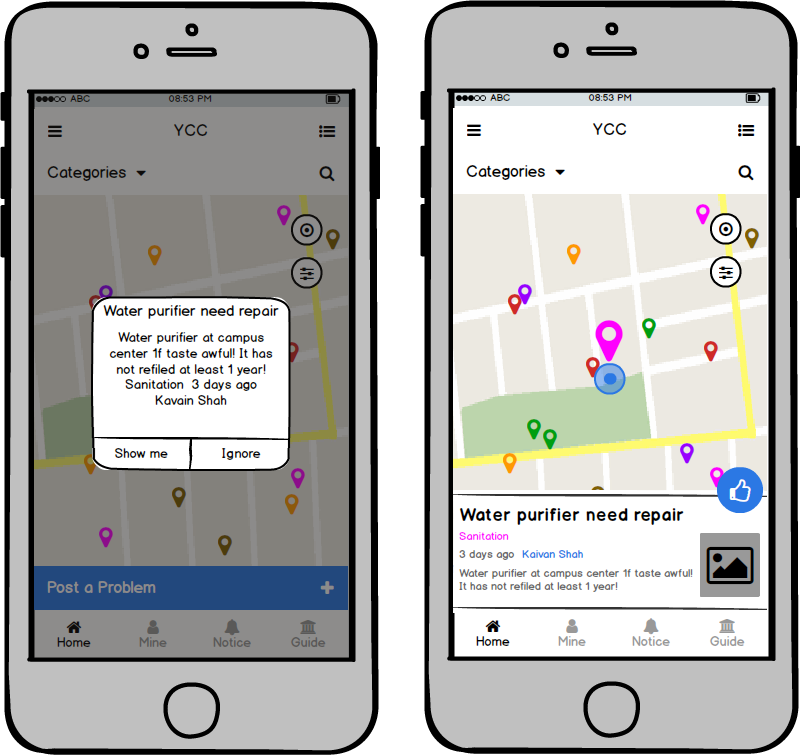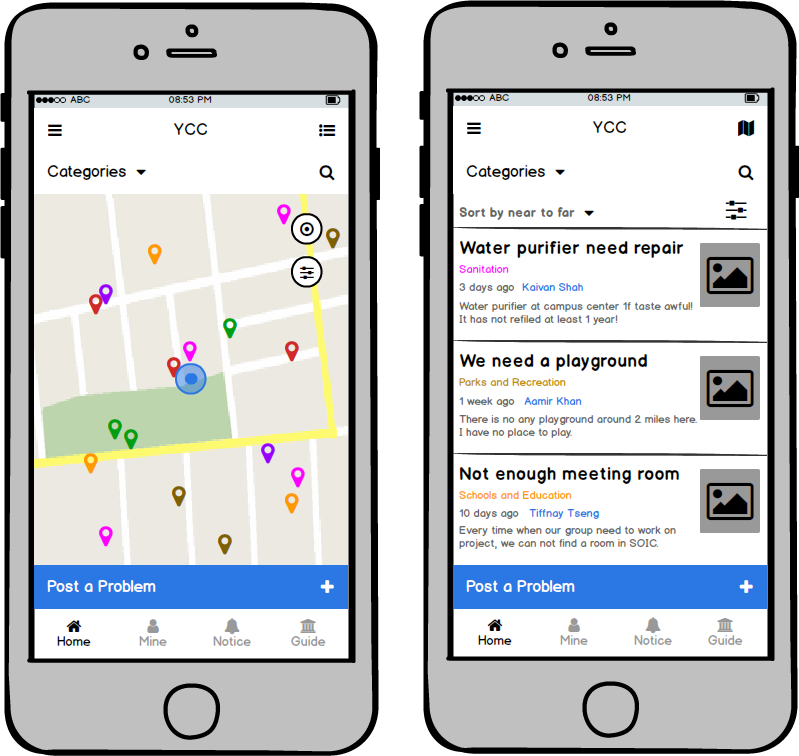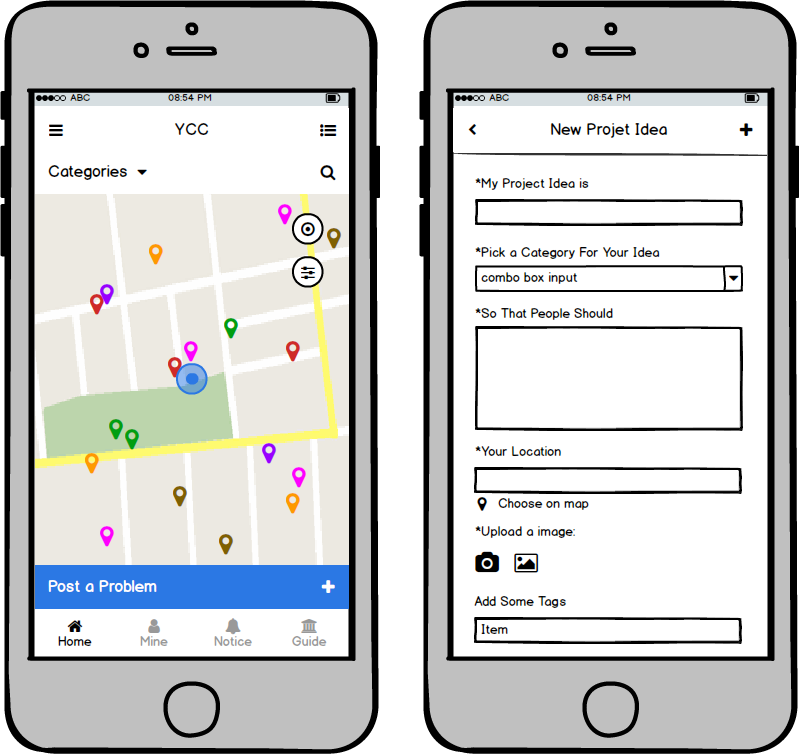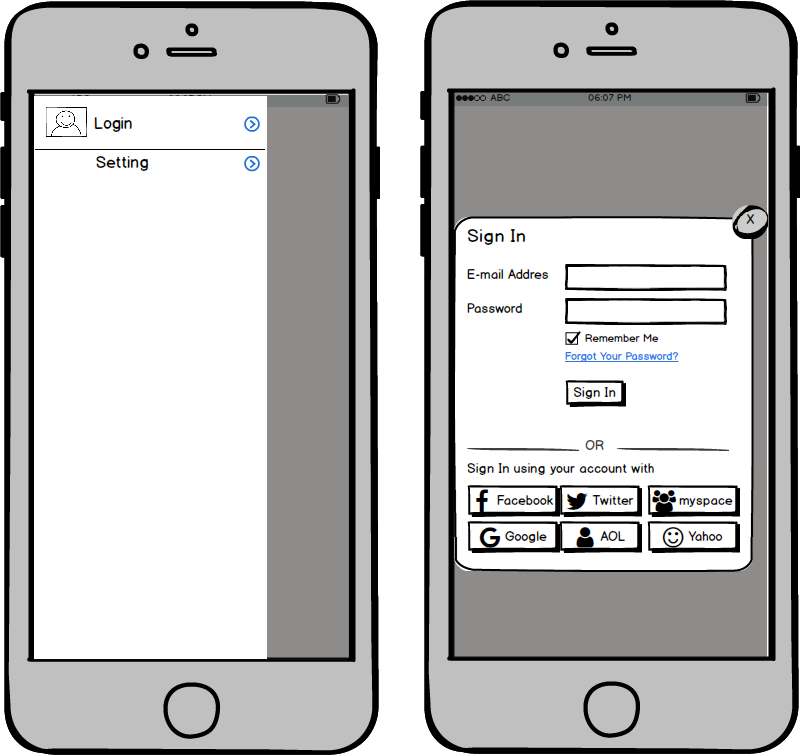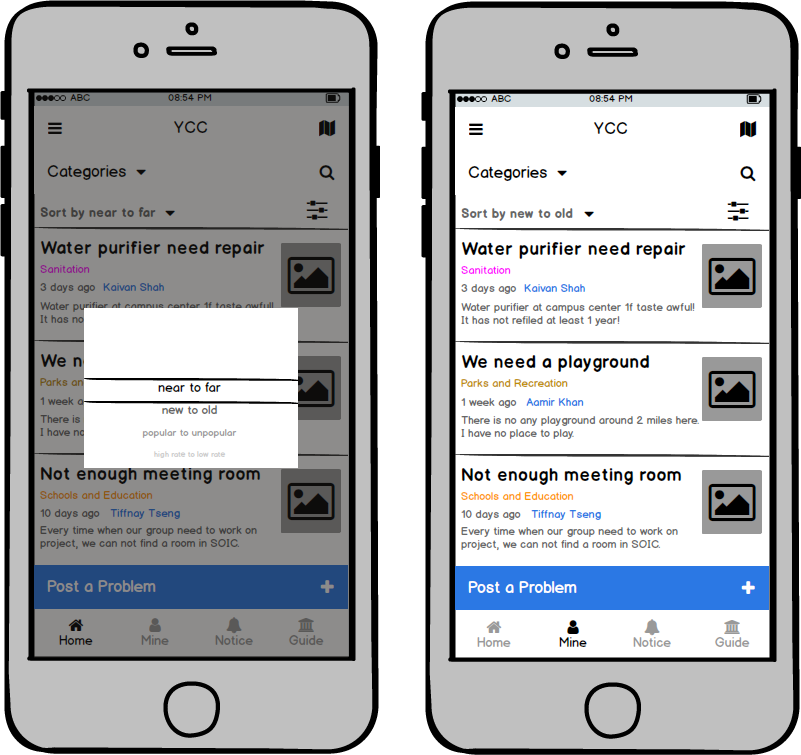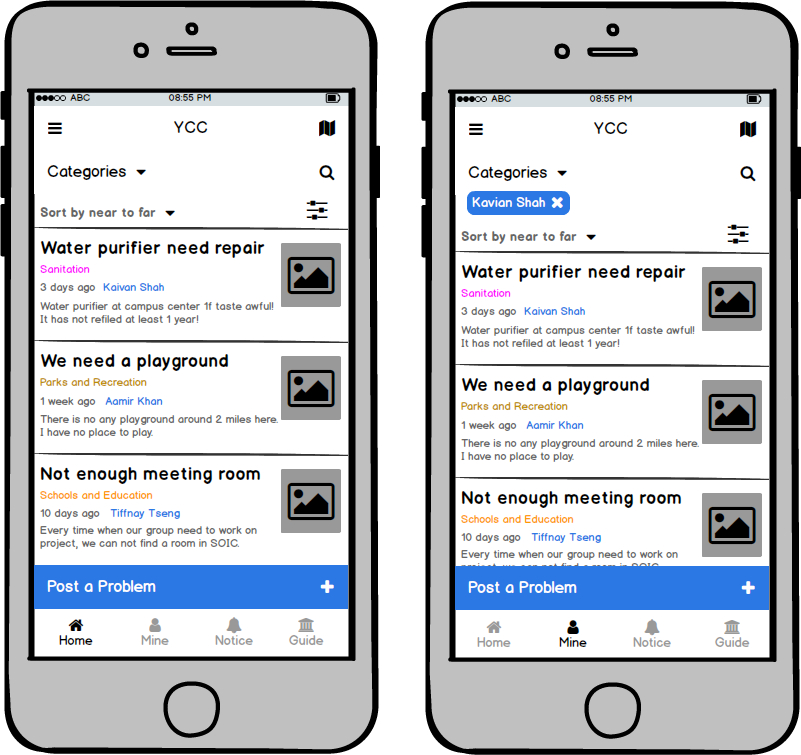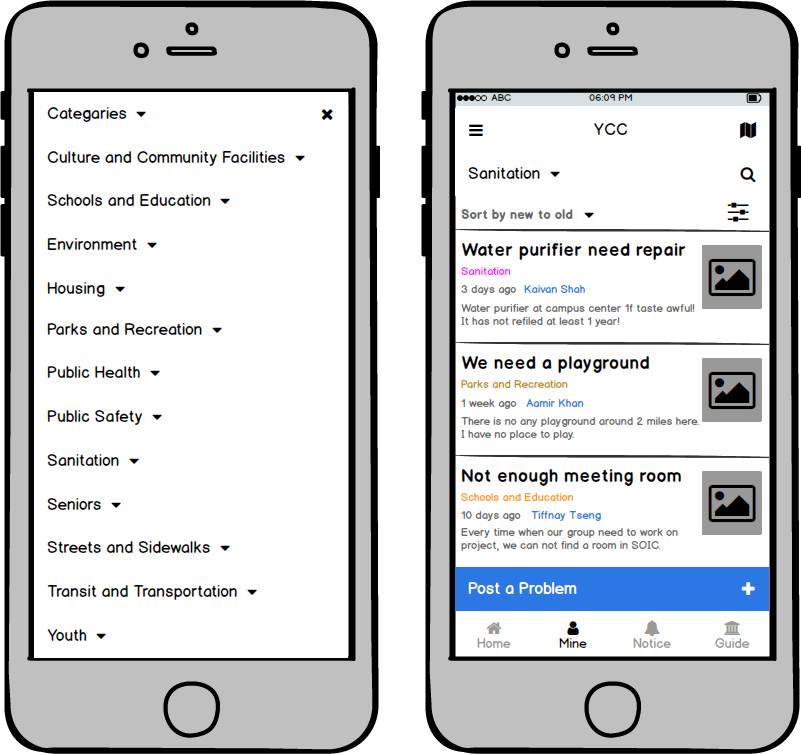OVERVIEW
About the Project
We focused our solution on Schools/ Universities from the other segments since a large part of the tax money goes into this particular segment. Out of the ideas that we brainstormed, our proposed solution is a Participatory Budgeting based web application that will have a platform for students, teachers, staff, and government representatives to get directly involved in the decision-making process for school improvements.
-
Role:
UI/UX Designer -
Tools:
Balsamiq, HTML, CSS, Javascript -
Client:
IUPUI -
Timeline:
November 2018-December 2018
HIGH-FIDELITY PROTOTYPE
Interactive Prototype Link
GOAL
The Challenge
Civic innovation has two fundamental parts: civic education and civic engagement. Our primary and secondary research showed that the lack of citizen education and engagement opportunities in the government system is one of the factors in low voting since the citizens believe that they don't have any 'say' in the decisions being made by the government. More so, our primary and secondary research also indicated that budgeting decisions made by the government do not involve any substantial user research or educated civic engagement.
RESEARCH INSIGHT
Problem Synthesis
Participatory policy reform, such as open government and civic innovation, has been implemented as an effort to leverage technology for a better democracy. The open government initiative increases transparency, but it fails to improve accountability. Hence we focus our problem space in improving the civic innovation process, which improves both transparency and accountability.
BRAINSTORMING
Design Decisions
The PAOBD product works in four steps.
Step 1: Participants log in and post problems/ideas to improve their university experience.
Step 2: Participants can view different posted problems/ideas through map view or list view and can vote on the idea and post solutions.
Step 3: Student volunteers will select all ideas and solutions. Then they will design a community event to brainstorm solutions around the problems with the help of PB experts. The problems will be evaluated based on popularity and severity. The selected problems and ideas will be included to make a project plan with the help of government officials based on the feasibility and viability of the ideas.
Step 4: These projects will be implemented to improve the university experience.
STORYBOARDING
Identifying Different Scenarios
“Build your school game” is created and deployed for students relaxing sessions so as to increase awareness and continuous engagement by interesting game levels to build their own school and deal with the authorities involved in the process to clear each level.

-
Scenario 01 Rob is a student at Tufts University. He is confused as to where he should get permission from. He clicks on the query to see where he can get permission from and who is responsible for the budget at this school. He gets familiar with game content and plays his next move appropriately. He wins and gains welfare points, which reflects his ranking amongst other students.

-
Scenario 02 Shawn is asking Anna with curiosity about how she cleared level 4 in the game, and Ana shares her experience by giving knowledge about the authorities he has to approach in level 4 in order to clear it. Shawn and Anna are so engaged that they talk about this on their way home, and Shawn gets back to the game in order to clear the level he was stuck on.
WIREFRAMING
Low-Fidelity Prototyping
EVALUATING
Key Evaluation Insights
Through our usability evaluation feedback and interviews, we found some potential insights that would help improve our product.
Insight 1: Providing intuitive and engaging onboarding to make users understand the process.
Insight 2: Providing appropriate feedback for each user action on the web application.
Insight 3: Providing progress tracker for participants to understand where they are in the PB process.
Insight 4: Users expected to be shown only some options depending on the PB phase in order to simplify the use of the product and decrease the cognitive load on the participants

